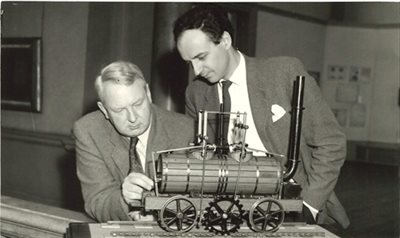Middleton Colliery Railway
The Middleton Colliery Railway was established in 1758 and was recognised as the world’s oldest continuously working railway. The railway was developed to facilitate the transportation of coal from the Colliery into Leeds. This led to the first Railway Act of Parliament which was concerned with ‘laying down the wagonway in order for the better supplying the town and neighbourhood of Leeds with coal’. This secured Leeds with better prices for coal due to more efficient transportation and anticipated the formation of large-scale industries. 24 tonnes of coal were to be supplied into Leeds per year at a cost of 4 shillings per tonne. Over the years this Act was revised in terms of the pricing and tonnage of the coal. In 1812, the railway was built and was made up of four locomotives allowing it to become the world’s first commercially viable locomotive.

June of 1958 marked the 200th anniversary of the initial Railway Act of Parliament. The Railway Correspondence and Travel Society organised a celebration to acknowledge this day in collaboration with the Railway and Canal Historical Society. A subcommittee made up of Clinker, Klapper, Hadfield and Vallance supported the acquisition of information to develop the exhibition. At the time of the exhibition the line was operated by the National Coal Board’s Wakefield area which aided the railway tours in special trains made up of open wagons. This allowed for an in-depth exploration of the systems making up the Colliery. The celebrations also included an open exhibition dedicated to the railway that was available at the Leeds Art Gallery.
The event took place on the 7th of June, but some members were able to arrive earlier (the evening of the 6th) to preview items within the exhibition. An exclusive excursion was afforded to these members, allowing them to visit South Market and Round Foundry Steam. The exhibition officially opened at the Leeds Art Gallery at 11am and was kept open for a week. Maps, artwork and models dedicated to the railway were available for viewing in the gallery. At 2pm the special trains of open wagons departed from Moor Road Depot for the tour of the systems making up the railway including the branches to the Midlands and Great Northern Lines. These wagons were hauled by the Hudswell Clarke Blenkinsop locomotive. Guided foot tours over the closed portion of the railway took place at 4pm upon arrival back at Moor Depot to Great Wilson Street. This was also available prior to the train tour.

Following these bi-centenary celebrations, later in 1958 the Middleton Colliery railways had been abandoned. However, in the following year, the Leeds University Union Railway Preservation Society had formed and took on the task of restoring the railway. Members of this union were proud of their venture, motivated by attempting to keep the history of the Middleton Colliery Railway alive. The duty of repair was taken on by university students including engine maintenance. While goods were still being transported, there was a decline in 1969 which led to passenger services on a more regular basis.
Despite all of the Middleton Colliery Railway’s commercial success, it never became a part of a large railway company. Today, the railway continues to offer services such as a trip around Middleton Park, on a diesel train on Saturdays or a Steam train on Sundays and Bank Holidays. Events are still run at the Colliery offering informative sessions for visitors. The railway continues to be preserved by volunteers of the Middleton Railway Trust.
By Najah Osman, Archive Intern